Minor Wounds Treatment: Cleaning, Dressing, and Avoiding Infection
When it comes to wounds, prompt and proper care is essential for optimal healing. From minor cuts to more serious injuries, understanding how to clean, dress, and treat wounds effectively can make a significant difference in recovery time and outcome. Wounds are a common occurrence in everyday life. They can range from minor scrapes and cuts to more serious lacerations and puncture wounds that require medical attention. Proper wound care is essential for proper healing and to reduce the risk of infection. Let’s delve into essential wound care techniques, explore preventive measures to avoid infections, and discuss various treatment options to promote speedy healing. We will discuss the following topics:
Causes of wounds
Symptoms of wounds
Home management of minor cuts
Other remedies
When to seek urgent medical care
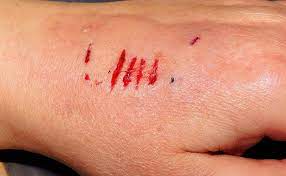
Causes of wounds
Wounds can be caused by a variety of factors, including:
- Trauma: is the most common cause of wounds. This includes injuries from accidents, falls, cuts, bites, tears and punctures.
- Surgery: Wounds can also be caused by surgical procedures, which can be intentional or accidental.
- Burns: can cause tissue damage that results in wounds. Burns can be caused by heat, chemicals, or radiation.
- Infections: Wounds can be caused by infections, such as bacterial, viral, or fungal infections. These infections can be acquired through contact with contaminated objects or surfaces.
- Chronic conditions: Certain chronic conditions such as diabetes, vascular disease, and autoimmune diseases can cause wounds that are slow to heal.
- Pressure: Prolonged pressure on the skin, such as from being bedridden or wheelchair-bound, can cause wounds known as pressure ulcers or bedsores.
- Cancer: Some types of cancer, such as skin cancer, can cause wounds. Cancer treatment, such as chemotherapy and radiation therapy, can also cause wounds to develop.
Symptoms of wounds
The symptoms of wounds can vary depending on the severity and type of the wound, but some common symptoms include:
- Pain: is a common symptom of wounds, especially if the wound is deep or has damaged nerves.
- Bleeding: can range from a small amount of oozing to profuse bleeding.
- Swelling: can occur around the wound as a result of inflammation.
- Redness: The skin around the wound may become red or pink.
- Warmth: The skin around the wound may feel warm to the touch.
- Pus or discharge: A wound may produce pus or other types of discharge if it becomes infected.
- Numbness: can occur if the wound has damaged nerves.
- Limited mobility: If the wound is on a joint or limb, mobility may be limited due to pain or swelling.
- Foul odor: may be present if the wound is infected.
- Break or tear in the skin
It is important to seek medical attention for wounds that are deep, gaping, or bleeding heavily, as well as wounds that show signs of infection.
Home management of minor cuts
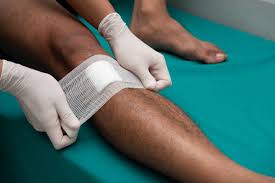

Minor cuts can be managed at home with the following steps:
-
Clean the wound: Wash your hands with soap and water, then clean the wound with cool running water to remove any dirt or debris. You can use mild soap if necessary.
-
Stop the bleeding: If the cut is bleeding, apply direct and gentle pressure with a clean cloth or bandage until the bleeding stops.
-
Apply an antiseptic: or ointment to the wound to prevent infection. You can use over-the-counter antiseptics like hydrogen peroxide or 70% rubbing alcohol.
-
Cover the wound: with a sterile adhesive bandage or gauze pad to protect it from dirt and further injury. The clean band-aid over the wound to absorb fluids oozing from the wound and to keep the wound clean.
-
Change the dressing: at least once a day or whenever it becomes wet or dirty. Avoid using scotch tape and masking tape to cover the wound (they are not appropriate)
-
Monitor for signs of infection: Keep an eye on the wound for signs of infection, such as redness, swelling, warmth, or pus. If you notice any of these signs, seek medical attention.
-
Keep the wound elevated: If the cut is on a limb, keep it elevated above the heart to help reduce swelling and promote healing.
Other remedies
Wound care is an important part of healthcare and there are many natural remedies available that can help to treat and heal wounds. From herbal remedies and essential oils to natural honey and tea tree oil, there is a wide range of natural solutions that can be used to promote healing and reduce the risk of infection. In this post, we will discuss some of the most popular natural remedies for wound care, as well as the benefits they offer.
Banana peel


Banana peel has long been used for its medicinal properties, particularly for wound healing. The potassium and magnesium present in the peel are known to stimulate cell growth and tissue regeneration, making it an ideal option for treating cuts and scrapes. Additionally, the high levels of antioxidants and vitamins in banana peel can help reduce inflammation and fight off infections. The natural ingredients found in banana peel can help speed up the healing process and prevent further damage to the affected area.
Apply the inside of a banana peel over the scratch (this performs the same action as a bandage)
Potato slice
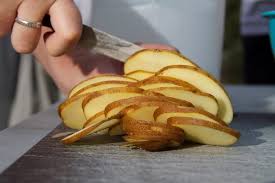

Potato slices have been used for centuries to help heal wounds. The potato contains a number of compounds that are beneficial to wound healing, such as vitamin C, zinc, and copper. In addition to these compounds, the potato is known to have antiseptic qualities that help reduce the risk of infection when applied to open wounds. The potato slice can be applied directly to the wound, or it can be boiled to create a paste that can be used as a dressing. Potato slices have been proven to reduce inflammation and swelling and can speed up the healing process. It is important to note that potato slices should not be applied to deep wounds, as it can increase the chance of infection.
Tape a thin slice of potato peel over the cut (this performs the same action as a bandage)
Papaya
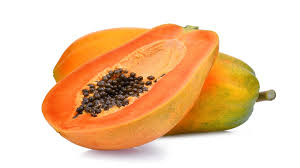

Papaya is a tropical fruit that has been used for centuries to support the healing of wounds. It contains enzymes, vitamins, and minerals that help to promote skin regeneration and healing. Papaya is also known to reduce inflammation, aid in tissue repair, and boost the immune system. It has been used to treat scrapes, cuts, and burns, as well as to help heal minor skin infections. Additionally, it can help reduce pain and itching associated with wounds. The healing properties of papaya make it an ideal choice for those looking for an all-natural solution to wound healing.
Uses of papaya
Mash unriped papaya
Apply to the affected area to remove dead tissue and promote the growth of new skin
Use on burns and ulcers
Spread a thick layer over the wound daily
Note that papaya can burn when first applied to the skin
Honey
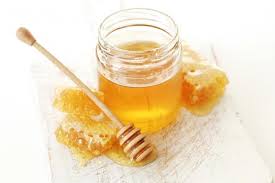

Honey has long been celebrated for its healing properties, particularly in wound care. Recently, medical science has caught up with traditional wisdom and there is growing evidence that honey can be an effective and safe treatment for wounds of all kinds. Its anti-inflammatory and anti-bacterial properties make it an ideal choice to reduce swelling, encourage healing, and prevent infection. Furthermore, honey’s natural consistency helps to keep the wound clean and optimizes the healing process. As such, honey has become a popular choice for wound care in both the medical and home care settings.
Do not apply directly to the skin (best to wrap in a bandage)
Uses of honey
Cleans the wound
Prevents scar formation
Promotes healing
Fights off infection
Reduces swelling
Cinnamon
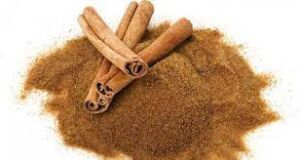

Cinnamon has long been known for its healing properties and its ability to aid in wound healing. Studies have shown that cinnamon helps to reduce inflammation and promote the growth of healthy skin cells. It also contains antibacterial and antifungal compounds that can help reduce the risk of infection. Additionally, it can help to increase the rate of healing and reduce the amount of scarring that occurs. For those looking to find an effective remedy for wound healing, cinnamon is an excellent choice.
Uses of cinnamon
Helps numb pain
Destroys bacteria
Stops bleeding
Wash wound with soap and water then dry
Apply cinnamon powder to the area
Cover with bandage
Ice
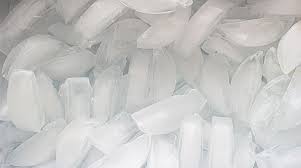

Ice has long been used to treat wounds, both minor and serious, as a way to reduce pain and swelling, speed up the healing process, and reduce the risk of infection. This is because the cold temperatures of ice constricts the blood vessels in the area, reducing inflammation and allowing the body to heal naturally. Ice can also numb the area, providing temporary relief from pain. In addition, ice can act as an antiseptic, helping to keep the wound clean and free of bacteria. The use of ice can be an effective tool in aiding the healing process, particularly when it is used in conjunction with other treatments such as antibiotics and wound dressings.
Uses of ice
Reduces pain and swelling by numbing the area
Use plastic wrap to secure the ice pack to the area
Protein


The human body relies on protein for many essential functions, including wound healing. Protein helps to rebuild damaged tissue, promote tissue growth and reduce inflammation, allowing wounds to heal more quickly and effectively. It can also help to reduce scarring, as well as protect against infection. Eating a balanced diet that includes plenty of protein is important for overall health, as well as helping wounds to heal more quickly.
Uses of protein
Restores damaged skin
Speeds up healing
When to seek urgent medical care
It is important to know when to seek urgent medical care, as delaying appropriate treatment can lead to further health complications. If you experience any of the following symptoms, you should seek medical help immediately. If you have any doubts about whether you should seek medical care, it is always better to err on the side of caution and consult with your doctor.
Seek care if:
The wound is very dirty
Bleeding is excessive
Tetanus immunization is not up to date
The wound is very deep, with jagged edges
Disclaimer: The information provided in this content is for general informational purposes only. It is not intended as medical or healthcare advice, diagnosis, or treatment. Always seek the advice of a qualified healthcare professional with any questions you may have regarding a medical condition or healthcare decisions.

